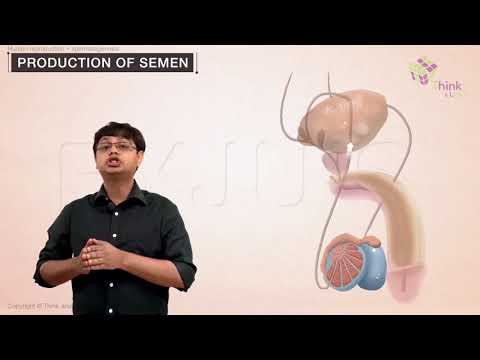Spermatids are a result of the primary spermatocytes undergoing the first meiotic division to produce a pair of spermatocytes to complete meiosis (second division). Spermatids are haploid in nature formed as a result and are linked to the others through the cytoplasmic bridges having superfluous cytoplasmic material near the nuclei. Consequently, the process of meiosis yields spermatids containing only half the genetic material found in the original set of primary spermatocytes.
Upon formation, the early round spermatids should experience events of maturation further in order to turn into spermatozoa through the process of spermiogenesis. Spermatids start growing a living thread developing a thickened mid-section, thus localizing the mitochondria forming an acrosome. The DNA of the spermatid turns highly condensed, experiencing packaging. Packaging of DNA with particular nuclear basic proteins is the first step that is later substituted during the elongation of spermatids by the protamines. The packed chromatin hence produced is inactive transcriptionally.
Spermatids are found in male gonads of organisms that reproduce through sexual means. Initially, in humans they can be located in the seminiferous tubules of the testis and subsequently make way into the lumen from the sertoli cells. Following this, they are passed into the epididymis where they experience the other events pertaining to maturation to turn into fully mature spermatozoa. The process of Spermatidogenesis produces spermatids and cells participate in spermiogenesis to produce spermatozoa.
Location of spermatids – Spermatids are situated at the lumen’s border where they lose their cytoplasmic associations and then differentiate into sperm cells. The journey of spermatogonial stem cells to the formation of mature sperms takes close to 65 days.
Spermatids are the main regulators of Sertoli cell function. Particular anatomical structures are found in these sertoli cells and spermatids whose roles accentuate during spermiogenesis; acting as effective mediators during the interaction between both these cells.
The role of spermatids is important in sertoli cell expression of genes and function of secretion in various age frames. The effect of late spermatids on sertoli cell secretion in the testis of the adult is conserved through the evolution. This can be mediated through its involvement in the changes (conformational) on sertoli cells occurring in spermatogenesis along with phagocytosis of the residual bodies.
The article discussed spermatids briefly. Explore more related articles at NEET BYJU’S for your NEET preparation.
Related links:
Recommended Video:
NEET Preparation | Semen Production


Comments